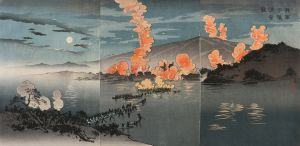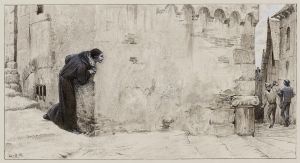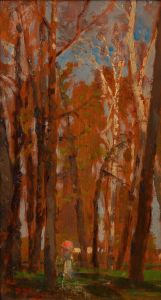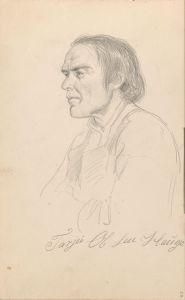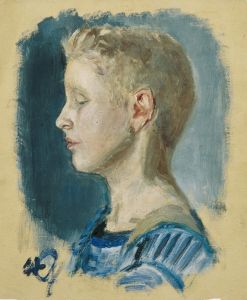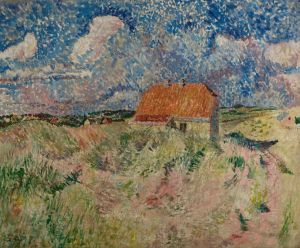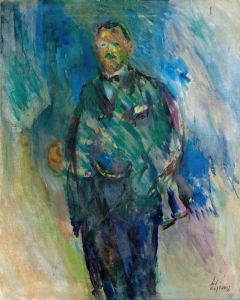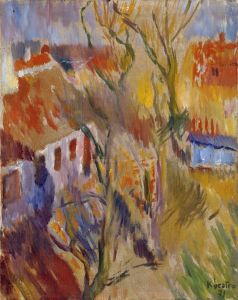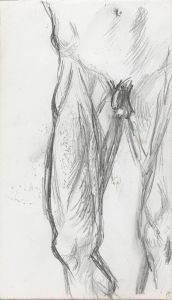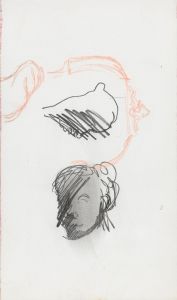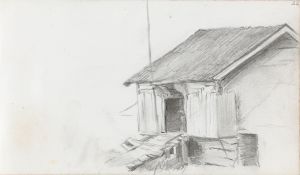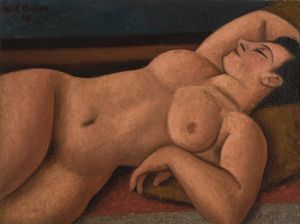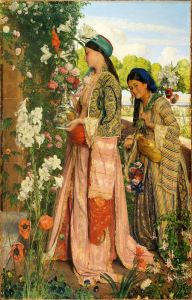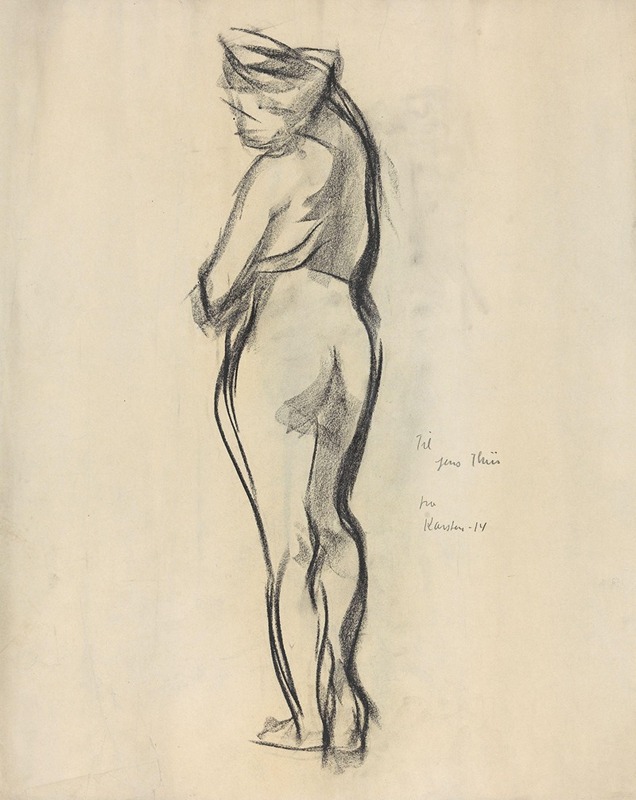
Ryggvendt kvinneakt
A hand-painted replica of Ludvig Karsten’s masterpiece Ryggvendt kvinneakt, meticulously crafted by professional artists to capture the true essence of the original. Each piece is created with museum-quality canvas and rare mineral pigments, carefully painted by experienced artists with delicate brushstrokes and rich, layered colors to perfectly recreate the texture of the original artwork. Unlike machine-printed reproductions, this hand-painted version brings the painting to life, infused with the artist’s emotions and skill in every stroke. Whether for personal collection or home decoration, it instantly elevates the artistic atmosphere of any space.
Ludvig Karsten was a prominent Norwegian painter known for his expressive use of color and dynamic compositions. One of his notable works is "Ryggvendt kvinneakt," which translates to "Female Nude Seen from the Back." This painting exemplifies Karsten's mastery in capturing the human form and his innovative approach to color and light.
Karsten was born on May 8, 1876, in Oslo, Norway, and became a significant figure in the early 20th-century Scandinavian art scene. He was associated with the Neo-Impressionist movement and was influenced by artists such as Edvard Munch and Henri Matisse. Karsten's work often explored themes of human emotion and the interplay of light and shadow, which is evident in "Ryggvendt kvinneakt."
The painting "Ryggvendt kvinneakt" is characterized by its bold brushwork and vibrant palette. Karsten's use of color is particularly noteworthy; he employed a range of hues to create depth and texture, bringing the figure to life on the canvas. The composition focuses on the back of a female nude, a subject that allows Karsten to explore the contours and musculature of the human body with sensitivity and precision.
Karsten's technique involved layering colors to achieve a luminous effect, a method that was innovative for his time. This approach is evident in "Ryggvendt kvinneakt," where the interplay of light and shadow enhances the three-dimensionality of the figure. The painting reflects Karsten's interest in capturing the transient effects of light on the skin, a hallmark of his style.
Throughout his career, Karsten was known for his ability to convey emotion through his depictions of the human form. In "Ryggvendt kvinneakt," the pose of the figure suggests a sense of introspection and vulnerability, inviting viewers to engage with the painting on an emotional level. This focus on the psychological aspects of his subjects was a recurring theme in Karsten's work.
Karsten's contribution to Norwegian art was significant, and his works are held in high regard in various collections. "Ryggvendt kvinneakt" is an example of his ability to blend traditional techniques with modernist sensibilities, making his work both timeless and innovative. His paintings are celebrated for their emotional depth and technical skill, and they continue to be studied and admired by art enthusiasts and scholars alike.
Ludvig Karsten passed away on October 19, 1926, but his legacy endures through his impactful body of work. "Ryggvendt kvinneakt" remains a testament to his artistic vision and his ability to capture the essence of the human experience through the medium of paint.





